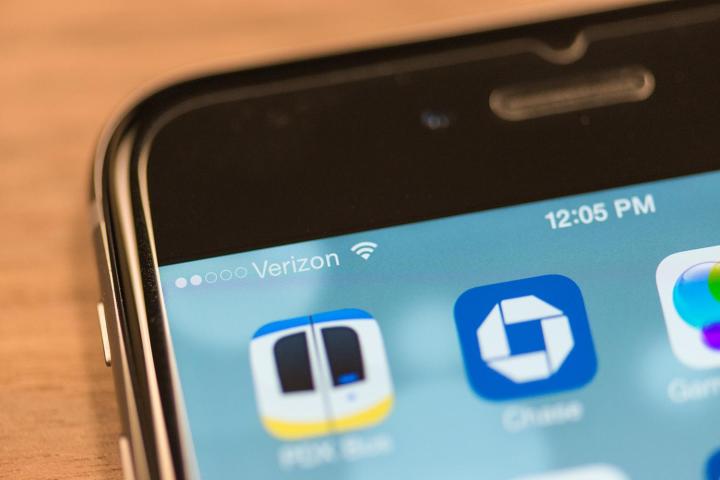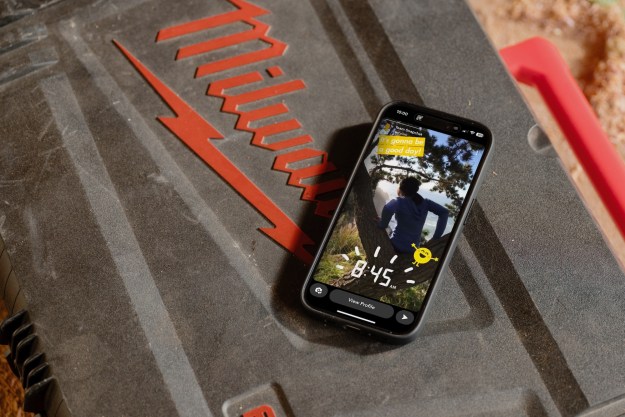We all check how many bars we have on our smartphones and assume it’s an accurate guide to how strong our signal is. But what do those bars really represent?
“There’s no standard. They do indicate signal strength, but it’s up to the handset manufacturer to come up with whatever algorithm they want,” explains Steve van Skike, Senior Manager of Test and Regulatory for cell-phone booster company Nextivity. “They certainly want to do something that is appropriate for the consumer, it needs to be meaningful information, but the details are up to them.”
Nextivity makes processors and products that boost cell phone receptivity. Its products have been approved by the FCC in the U.S. and by over 180 operators globally. The company also supplies the boosters that T-Mobile gives away to customers in the U.S. to improve the quality of their service. Consequently, Steve does a lot of signal testing.
There’s no standard unit of measurement for a bar on a phone.
“The way these things work is that the handsets report what they see back up to the network, and then the network tries to make an intelligent choice as to what technology, band, channel, etc. the handset is going to use for its next communication,” he told Digital Trends. “It’s not always based on how strong the signal is.”
If you’re in a crowded place, like a stadium, for example, you might be pushed onto another wireless band simply because your phone supports that capability. But even if you are connected to exactly the same tower as the guy next to you, there’s no guarantee you’ll have the same number of bars on screen.
It may come as a surprise to learn that there’s no standard unit of measurement for a bar on a phone. Handset manufacturers use a variety of different radios in their smartphones and every radio is a little bit different. It’s up to the manufacturer to decide how the cell phone reports back to the base station, and how many bars it shows for a specific signal level.
So do more bars always mean a better signal?
“Almost always, yes. There are cases where you can have interference or capacity problems and you may have plenty of bars of signal, but it doesn’t mean that the service is reliable at all,” explains van Skike. “But for the most part these things work the way they’re supposed to, and more bars should mean better service.”
Not all phones are the same
Different manufacturers use different algorithms to calculate the bars that are displayed on a phone’s screen. But it all starts with something called the pilot channel.
“You can characterize the waveform — the signal coming from an operator, whether it’s LTE or UMTS — by a pilot channel that’s always transmitted, which is a constant,” says van Skike. “The traffic loading goes up and down depending on how many people are using the network.” But nothing’s simple, especially not signal strength. Sometimes the manufacturer includes another parameter beyond that channel.
“iPhone products stood out because you could put an Android phone next to an iPhone and decrease the signal-to-noise ratio on purpose, while keeping the input signal level constant, and you’d see the bars decrease,” explains van Skike. “So we knew right away that they had a more complicated algorithm when determining the number of bars.”
That means the iPhone may be taking into account how heavily loaded the network is. It may be checking if there is interference present that could effectively decrease the signal-to-noise ratio. It’s looking for factors, beyond signal strength, that could impair the quality of the call.
How quickly do bars change?
Phones are complex, van Skike told Digital Trends, and internal algorithms dictate what functions take priority at any given moment. And frankly, some phones may not update the bars on the screen very often. “We’ve seen in excess of 15 minutes without an update on the number of bars. What you’re seeing, versus what is reality, can be two very different things, and that can make it difficult sometimes to use a handset as a measuring tool.”
That means, if you’ve ever walked around with your phone held in the air like a divining rod, staring at those bars, willing them to jump, you may be wasting your time. It depends on what kind of phone you have.
“Sometimes there’s confusion created by the fact that the handset bars aren’t updated very often. Let’s say somebody puts a booster device in and it happens to be in area with a lot of network congestion,” says van Skike, “An iPhone might show you two or three bars, because of lower signal-to-noise ratio, because of issues on the network, whereas an Android right next to it shows five bars. If I were to walk away from the booster, I’d see the signal level drop on the
“When you have an algorithm that’s made up of multiple parameters it’s a very different curve.”
How is it measured?
The measurement that’s used is dBm, which is decibel-milliwatts. The measure of a good signal differs slightly depending on the underlying technology.
“For UMTS, wide-band CDMA, we like to see a level of around -106 dBm RSCP [received signal code power],” says van Skike. “But for LTE, -120 dBm RSRP [reference signal received power] is a reasonable level.”
You can actually measure the strength of your signal yourself by accessing the field test mode.
“At the high end -50 dBm would be extremely high,” he added. “You’ve got to be pretty close to a base station to get something like that.”
You can actually measure the strength of your signal yourself on most phones by accessing the field test mode. This is a hidden menu on most handsets that offers up radio information. The code to unlock it varies from device to device.
For example, punch *3001#12345#* into your iPhone’s dialer and you’ll get its field test menu. If you want to try it, search online for “field test mode” and the model of your phone to find the right code for your device.
How can you make emergency calls with no bars?
When you make an emergency call in the U.S., your phone uses any available channel from any operator, van Skike explains. “It doesn’t matter who your service contract is with, or who your operator is. You could even be low on battery, where your phone wouldn’t normally let you make a phone call, but it will let you make an emergency call at all costs.”
It’s actually a legal requirement in the U.S. and many other countries, but it doesn’t relate to the bar system.
“The legal requirement is that you can make a phone call and your position can be determined, not that the number of bars is calculated right,” says van Skike.
What can you do to boost your signal?
Booster technology has been restricted recently after the FCC brought in new regulations. The agency has clamped down on some older amplifying technology because it was causing problems for the operators, who pay a lot billions to license the spectrum from the government.
“If you inject noise into a radio channel, you are effectively decreasing the capacity of that channel for all users, so it’s not good for the operators, and it’s not good for the consumer either,” says van Skike. “We offer a smart booster. In the simplest terms it’s a booster that’s based on a cell phone design. We’re transparent to the network, and we never interfere with it. That’s why we’re allowed the high gain we have of 100db, which is far above what you’ll get elsewhere.”
Nextivity’s boosters start at around the same price as a smartphone. But if you’re with T-Mobile and having problems, call them and ask about Cel-Fi Signal Boosters.
Boosters aren’t the only option. Some carriers offer femtocells, which boost your signal strength by using your home Internet connection. Another backup for poor service indoors that’s beginning to gain ground is Wi-Fi calling. Apple’s iOS 8.3 update just brought support for Wi-Fi calling to Sprint and EE. T-Mobile already supports it, and AT&T and Verizon are expected to follow suit this year. It’s worth checking to see what your carrier’s policy on that is.
Now that we know what the bars are really showing, and how to measure the signal strength for ourselves, we’re off to check out that field test mode.
Editors' Recommendations
- What do military drop test certifications really mean?
- How much RAM does a smartphone actually need? We asked the experts



